Two weeks in Tahiti: What it's like visiting the site of the 2024 Olympic surfing venue
Rosie Paterson, Country Life's Travel Editor, journeys to Tahiti, in French Polynesia, where adrenaline junkies can try their hand at big wave surfing, diving with humpback whales and planting coral.
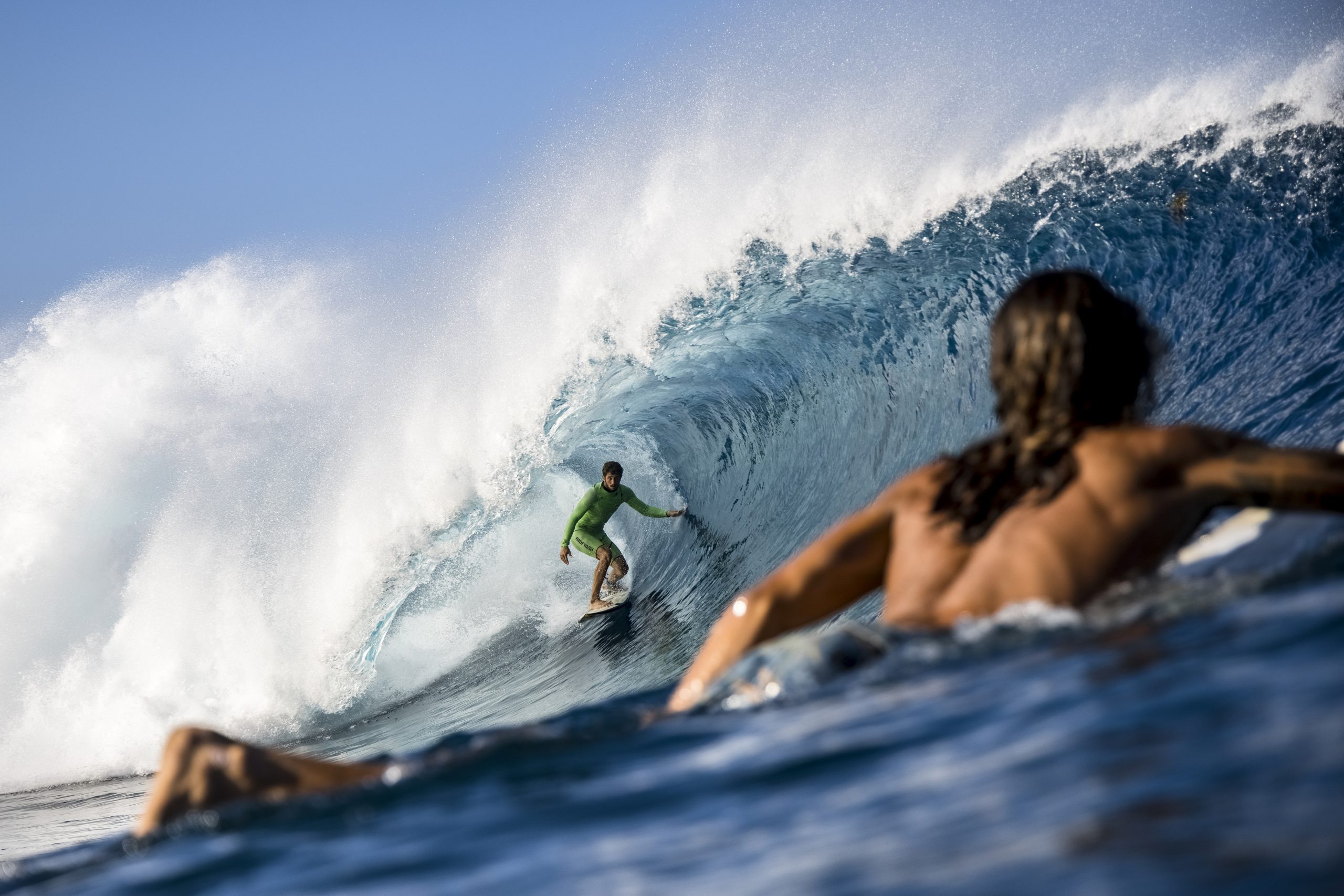

A humpback whale’s song can pulse through up to 10,000 miles of water. It takes a pair of 5,000-litre lungs — 1,000 times larger than a human’s — to engineer the noise, a sort of haunting, guttural whine. The animal can also produce dense columns of seawater spray from its blowhole that reach heights of 16ft. This plume, deceptively tricky to spot, is what gave a mother and calf away off the Teti’aroa atoll (below) in French Polynesia in October last year.
In the coming days, Tahiti, French Polynesia's economic, cultural and political centre, will host the Summer Olympics' surfing events — breaking the record for the farthest medal competition to stage outside the host city. But more on that later.

The whale had voyaged from Antarctica to birth her two-ton baby in warmer water. We’d been on the lookout for an hour, the water’s surface an unyielding, unbroken plane. No seawater spray in sight. And then, out of nowhere, there it was. A small puff, 150ft away, visible only to Yanni, our guide, and then the arch of a whale’s back and a dorsal fin, visible to the rest of us.
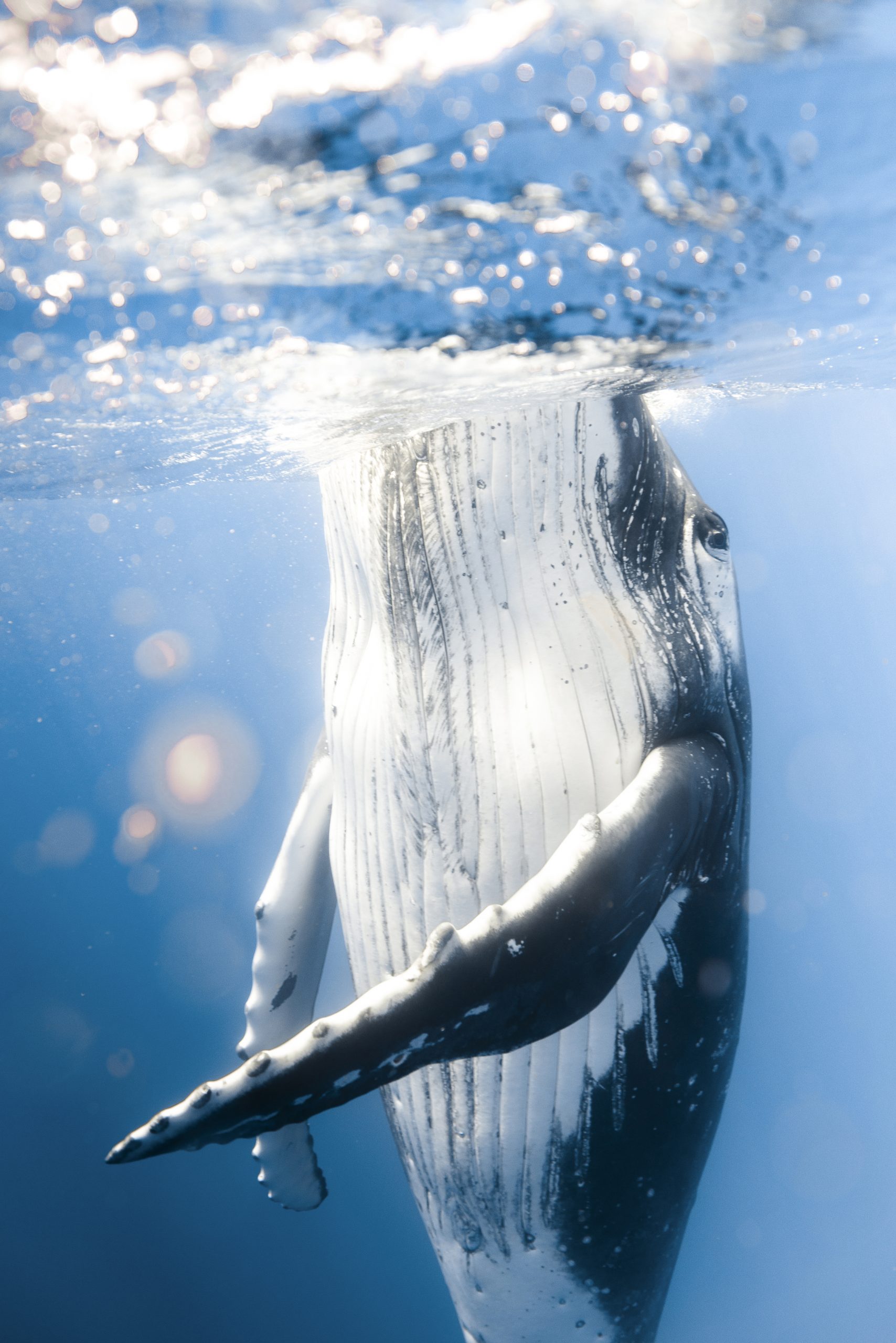
French Polynesia is one of the only places on the planet where you can swim with juvenile humpback whales; Teti’aroa — 12 motus, or reef islets, that harbour The Brando hotel and Tetiaroa Society — is one of the only places where you can do unencumbered by crowds. It is best explored with the guidance of an experienced outfit, such as luxury land and yacht specialists Pelorus.
An adult humpback whale typically surfaces four times in quick succession before diving down for 20 minutes. A calf can hold its breath for roughly half of that. The key to swimming with them is patience. You have to wait several breath cycles, to check that the whales are surfacing in the same area, before gently hauling yourself over the side of the boat. In this part of the world, the water takes on a velvety-blue hue and suffocates your vision. There are no visual markers — no rocks, no reef, no sandy sea floor — and seemingly no whales.
Until there are, the mother, her gargantuan 55ft body suspended impossibly gracefully in the endless blue and her calf, fragile in comparison, but still the size of a family car.
The interaction was so astonishing that I didn’t notice a bizarre, tubular jellyfish wrapping its tentacles around my calf. It ended when the mother, shepherding her charge, vanished almost instantaneously into the deep with a casual flick of her tail.
Sign up for the Country Life Newsletter
Exquisite houses, the beauty of Nature, and how to get the most from your life, straight to your inbox.
Afterwards, wide-eyed, eating chocolate-chip cookies from The Brando’s kitchen with salty fingers, Yanni says: ‘Who knows if we are the first people they’ve seen. We need to represent the best of humans. “Yes, sometimes we can destroy the planet and in the past we hunted you, but we are better” — and they can feel that.’
French Polynesia is a French collective made up of five archipelagos spread across a swathe of the South Pacific five times as large as France and bursting to the leafy seams with people and institutions determined to preserve their precious marine life. As well as the whales, there are sharks, turtles, rays, myriad tropical fish and spindly fingers of brightly coloured coral that carpet the ocean floor.
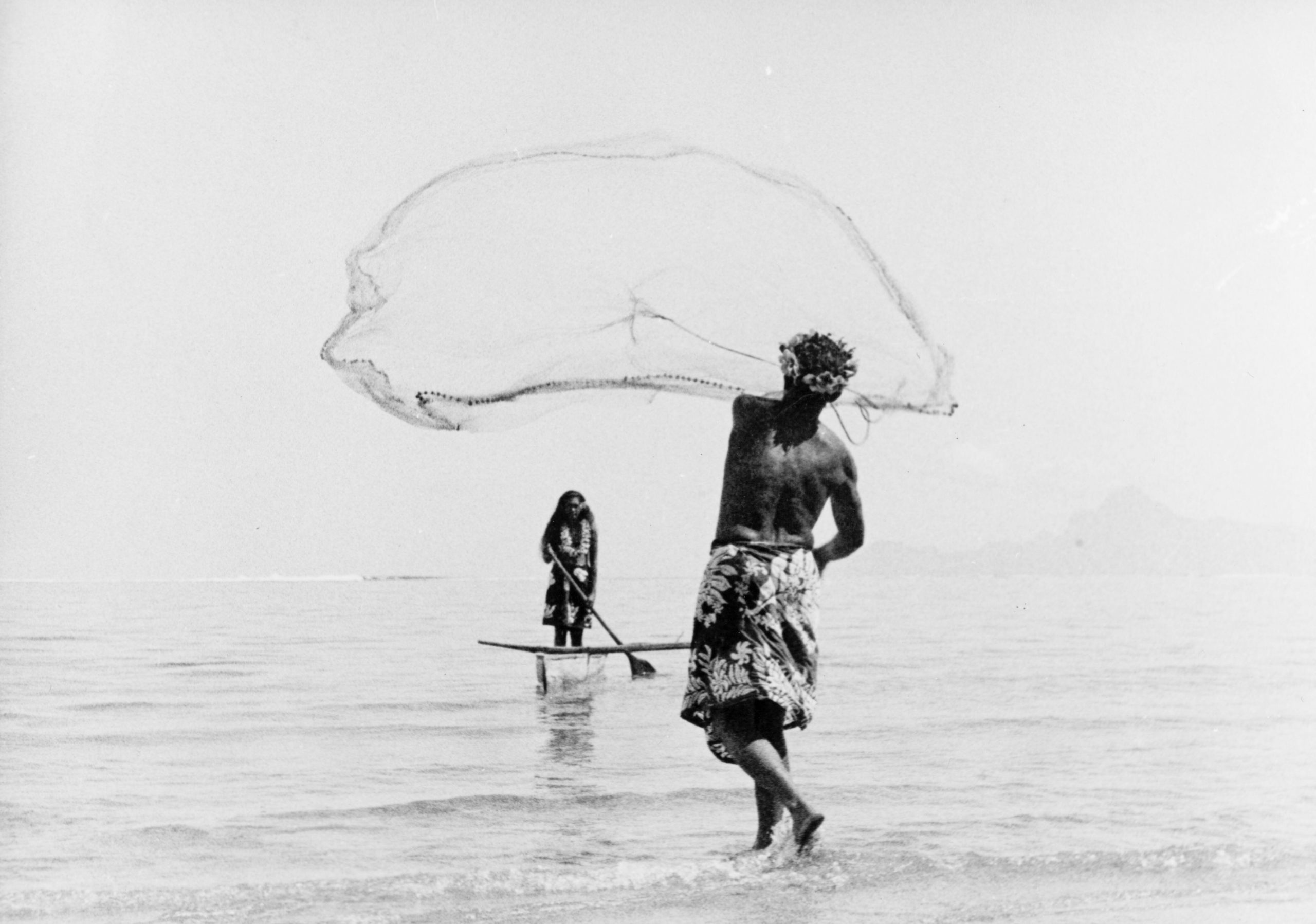
The area was first inhabited during the Great Polynesian Migration between 3,000BC and 1,000BC, fierce, sea-faring men and women canoeing thousands of nautical miles in va’a (outrigger canoes) from Asia (above in 1965), using only celestial navigation to guide them. Ocean water runs in Polynesians’ veins and, although Western influences increasingly loom large, it’s not uncommon for older fishermen to ask for a shark’s permission before taking fish from their feeding grounds, says Matairii from the Tore Tore Association, which was founded in 2005 to protect the sharks living off Tahiti, French Polynesia’s largest island, from the ruinous shark-finning industry.
The spirits of lost loved ones often take on the form of sharks and manta rays, says Kenae of Captain Taina, which runs ecologically minded, glass-bottom boat tours off Mo’orea (in the lyrical Polynesian language, still widely spoken, an apostrophe denotes a pause in a word’s pronunciation). Mo’orea, clearly visible from Tahiti, is an earthly paradise, its soaring volcanic peaks iced head to toe in spongy vegetation. On moodier days, clouds snag in the steep crevices and raindrops the size of marbles plip-plop off palm fronds and pool inside hibiscus plants. The air becomes so thick with moisture you swear you can feel and hold it in your mouth.
Kenae and his mother, the Capt Taina, point out a school of spotted eagle rays carving a line through the lagoon in a well-practised diamond formation. In pellucid, waist-high water, black tip reef sharks swim in languid circles around our thighs and genial stingrays nibble hungrily at our fingers. When guests get hungry, Kenae and Taina show them how to prepare a typical French Polynesian dish: local, raw fish marinated in coconut milk, sometimes served with chopped tomatoes and a little honey.

Coral Gardeners, a Mo’orea-based coral-conservation project started by the then 18-year-old Titouan Bernicot (above) in 2017, works out of a modest office — a single-storey home on the water’s edge — that belies its global reach. Rolex and Billabong are supporters. M. Bernicot began by stringing fragments of coral along ropes and leaving them to mature in underwater nurseries.
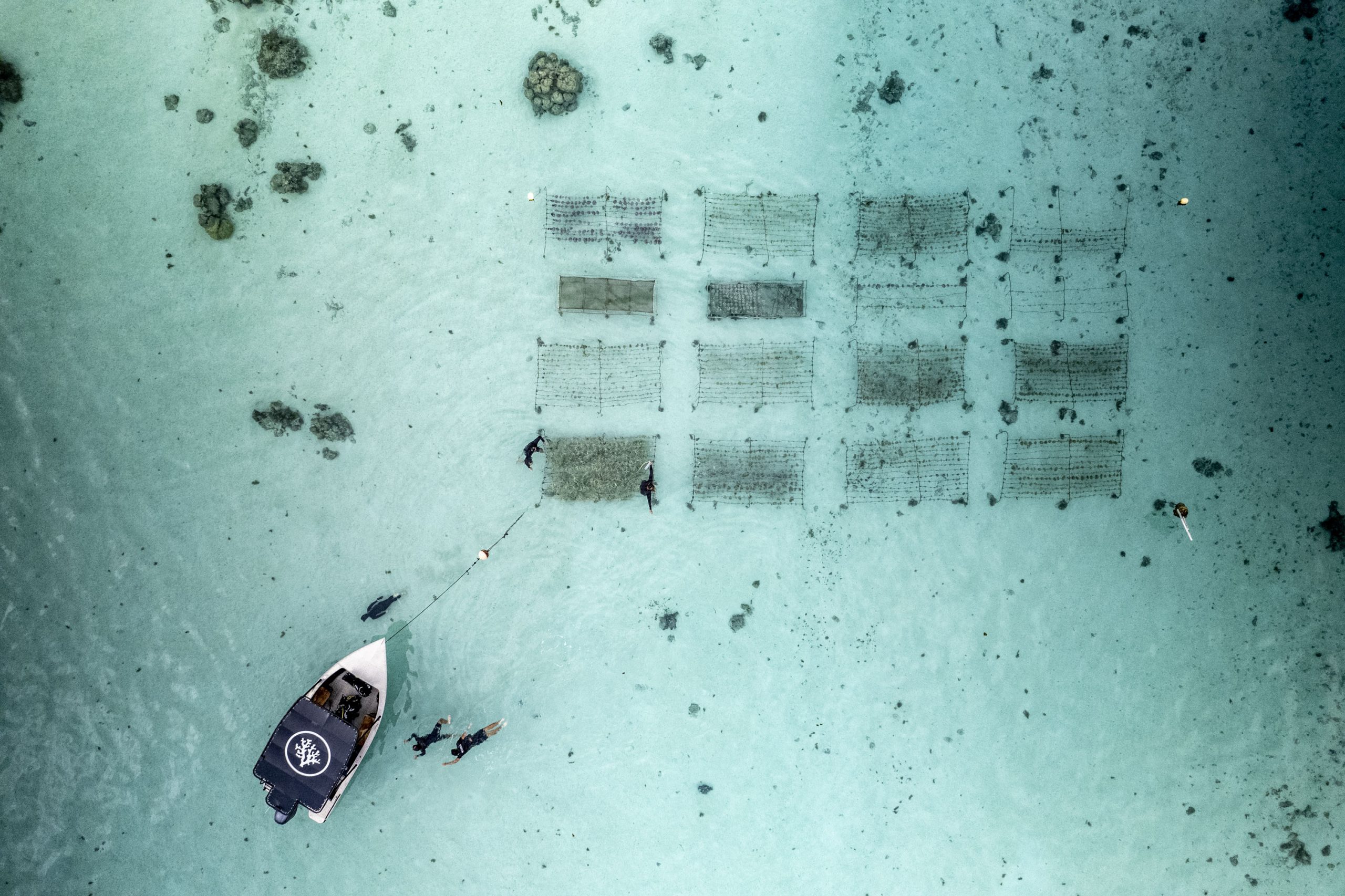
Donations meant he could eventually plant the sizeable organisms back out in the ocean. He now employs 40 people and has expanded to Fiji. His head of sustainable tourism, Tiphain, is passionate about inspiring ‘people who aren’t scientists’. She adopts an open-door policy, embracing tourism, which is ‘always going to be there’, and using it as an opportunity to ‘develop awareness’.

Crossing the globe to The Brando, a 35-thatched villa resort (above and below), comes with its own carbon footprint, but the resort is within touching distance of ensuring every guest enjoys a carbon-neutral stay and few hotels, if any, can claim to be as green. There’s a state-of-the-art, $12million seawater air-conditioning system (SWAC), engineered to last 50 years, but generate savings after only 10.
Some 4,700 solar panels are responsible for 60% of the resort’s energy and a waste-composting system feeds the kitchen garden. Water flowing from taps and showers comes from a desalination plant and groundwater is mixed with rainwater to fill swimming pools.
Named after Marlon Brando, who bought Teti’aroa in the 1960s, the resort is popular with Americans — whose journey to the literal middle of nowhere is a little easier than ours — and famous faces who don’t want to be hassled. Rumour has it Barack Obama penned his memoirs here. There are subtle nods towards the actor—the inspiration behind the new, fine dining restaurant is his 1962 film Mutiny on the Bounty, filmed in Tahiti — but at heart, The Brando is a proper, albeit magisterial, desert-island escape.

Guided excursions are run by the Tetiaroa Society, a non-profit funded, in part, by the resort. Its work has made this the most studied atoll in the world. We learn that Teti’aroa was a sacred place where royal families came to converse and bathe in the milky shallows (volunteers have helped to restore archaeological sites and historic villages). And that 17 species of bird inhabit the area, seven on Bird Island — in Tahitian culture, birds are divinely linked to the Gods — including noddys, frigates and terns.
Gingerly picking our way through tightly woven jungle, we come across researchers trying to tempt out coconut crabs with chunks of the thick-husked fruit. The scientists want to measure the bright blue and orange critters’ abdomens, but the crabs can scuttle backwards to evade capture and their bite is comparable to that of a great white shark. It’s a job, I quickly decide, best left to the experts.
Perhaps the most intriguing of all French Polynesia’s native animals is the sea turtle and The Brando can lay claim to the archipelago’s biggest nesting site. A female sea turtle takes between 30–40 years to reach maturity and swims back to her birthplace—from Fiji—to nest. It sounds like something out of a fantasy novel, but turtles have a crystal in their brain that enables them to keep track of the earth’s magnetic field as they migrate. They also have a great sense of smell, but only one in 1,000 will ever reach adulthood.
The Tetiaroa Society is assisted by Te mana o te Moana, a specialist turtle conservation charity based at the InterContinental Tahiti Resort & Spa, where guests bump flippers with injured turtles recuperating in a penned-off lagoon. The resort is close to Tahiti’s capital, Pape'etē, with its colourful market — snaffle a vial of Tahitian vanilla and handwoven basket — and it has a car-hire system that means you can roll from the breakfast buffet straight into a waiting vehicle.

Drive north to reach black-sand Venus Point beach, so named because it’s where Capt James Cook measured the transit of the eponymous planet in 1769. Drive south and you’ll eventually stumble across Teahupo’o, a village famous for its thundering surf break.
Teauhupo'o is one of the biggest tests for surfers: it's one of the heaviest waves in the world — fuelled by roiling ocean currents and swirling winds — and breaks over a razor sharp reef. A short 150 ft beyond the reef, the ocean floor drops suddenly to depths of 300 ft which means that the water travels for miles unimpeded before being forced, abruptly, into much shallower depths. There's nowhere for the water to go apart from up. Some of the waves have been known to break at heights of around 50 ft.

This week, Olympians will battle it out for gold on the glassy barrel. Local surfers and the Coral Gardeners were at the forefront of a fight to stop French officials erecting a new, metal judging tower on the reef (judges at the annual Billabong Pro Tahiti surf competition use an existing wooden structure; above). They weren't successful this time round — but the war to shelter one of earth’s undisputed paradises goes on.
At a glance Rosie Paterson’s itinerary
- Pelorus can organise bespoke itineraries throughout French Polynesia. Examples include four nights at The Brando, seven-day luxury yacht charter, domestic flights and activities including jungle four-wheel drives, diving and kitesurfing, from £90,000 per person
- Visit www.tahititourisme.uk/en-gb for more information on The Islands of Tahiti
- Click here for the full Olympic surfing schedule
Rosie is Country Life's Digital Content Director & Travel Editor. She joined the team in July 2014 — following a brief stint in the art world. In 2022, she edited the magazine's special Queen's Platinum Jubilee issue and coordinated Country Life's own 125 birthday celebrations. She has also been invited to judge a travel media award and chaired live discussions on the London property market, sustainability and luxury travel trends. Rosie studied Art History at university and, beyond Country Life, has written for Mr & Mrs Smith and The Gentleman's Journal, among others. The rest of the office likes to joke that she splits her time between Claridge’s, Devon and the Maldives.
-
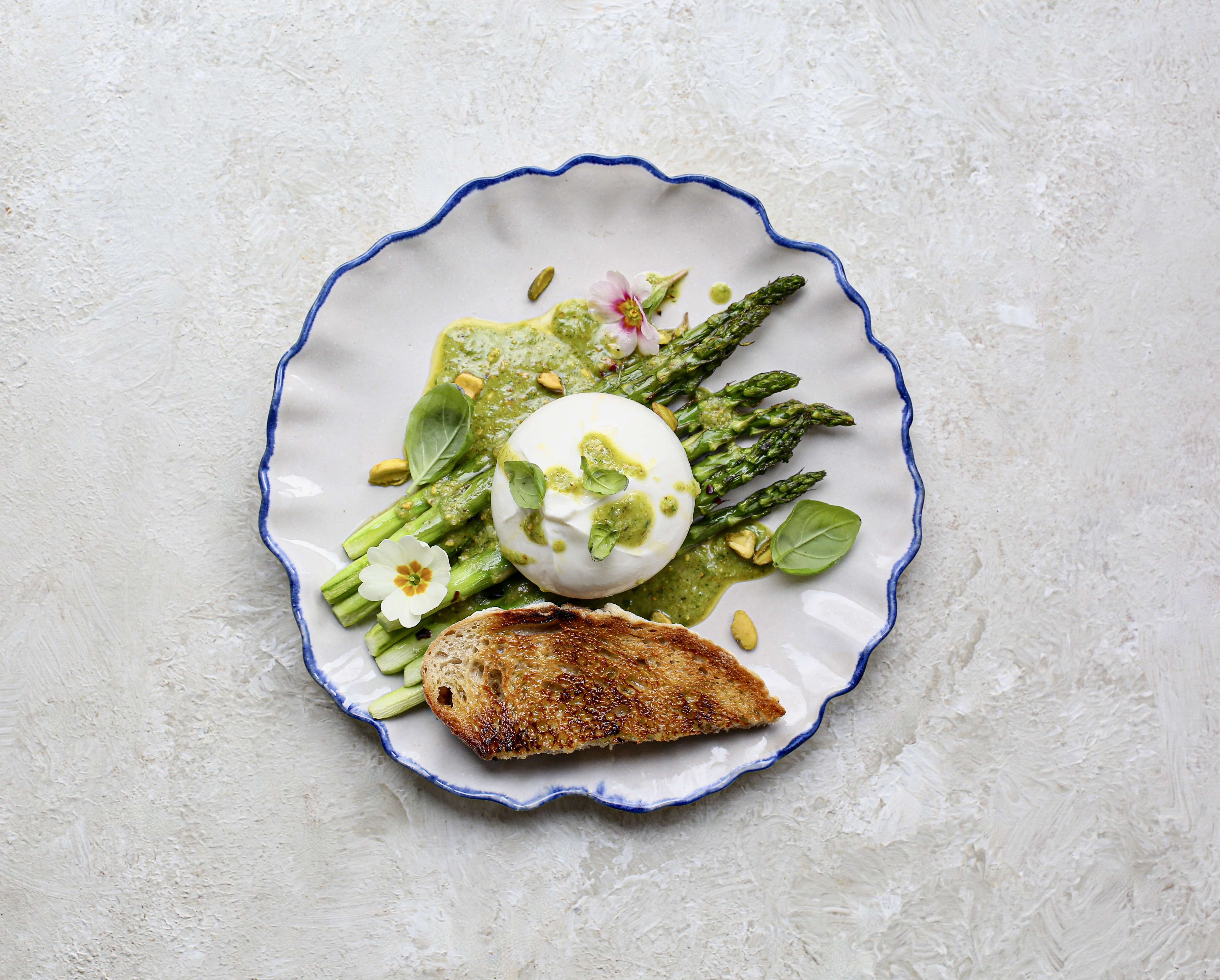 Two quick and easy seasonal asparagus recipes to try this Easter Weekend
Two quick and easy seasonal asparagus recipes to try this Easter WeekendAsparagus has royal roots — it was once a favourite of Madame de Pompadour.
By Melanie Johnson
-
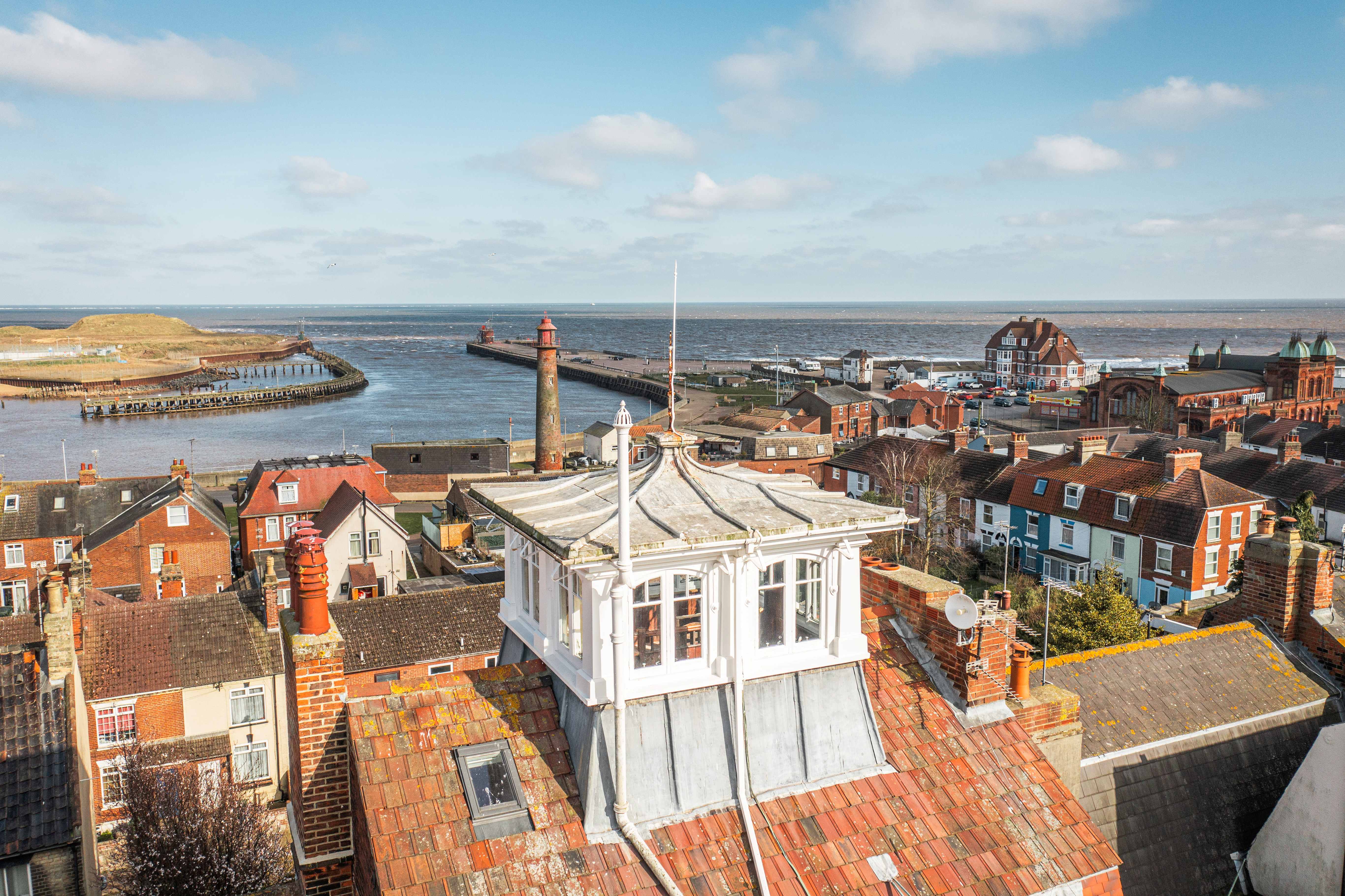 Sip tea and laugh at your neighbours in this seaside Norfolk home with a watchtower
Sip tea and laugh at your neighbours in this seaside Norfolk home with a watchtowerOn Cliff Hill in Gorleston, one home is taller than all the others. It could be yours.
By James Fisher